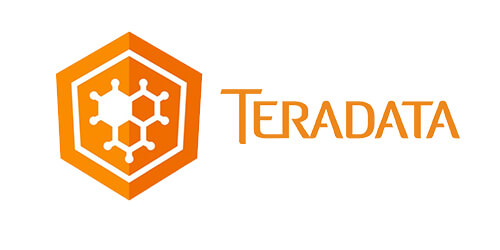
1. Why is naive Bayes so ‘naive’?
NaiveBayes is so ‘naive’ because it assumes that all of the features in a data set are equally important and independent. As we know, these assumption are rarely true in real world scenario.2. Explain prior probability, likelihood and marginal likelihood in context of naive Bayes algorithm?
Prior probability is nothing but, the proportion of dependent (binary) variable in the data set. It is the closest guess you can make about a class, without any further information. For example: In a data set, the dependent variable is binary (1 and 0). The proportion of 1 (spam) is 70% and 0 (not spam) is 30%. Hence, there is 70% chances that any new email would be classified as spam.Likelihood is the probability of classifying a given observation as 1 in presence of some other variable. For example: The probability that the word ‘FREE’ is used in previous spam message is likelihood. Marginal likelihood is, the probability that the word ‘FREE’ is used in any message.
3. You are assigned a new project which involves helping a food delivery company save more money. The problem is, company’s delivery team aren’t able to deliver food on time. As a result, their customers get unhappy. And, to keep them happy, they end up delivering food for free. Which machine learning algorithm can save them?
You might have started hopping through the list of ML algorithms in your mind. But, wait! Such questions are asked to test your machine learning fundamentals. This is not a machine learning problem. This is a route optimization problem. A machine learning problem consist of three things:4. You came to know that your model is suffering from low bias and high variance. Which algorithm should you use to tackle it? Why?
Low bias occurs when the model’s predicted values are near to actual values. In other words, the model becomes flexible enough to mimic the training data distribution. While it sounds like great achievement, but not to forget, a flexible model has no generalization capabilities. (When this model is tested on an unseen data, it gives disappointing results)In that case, we can use bagging algorithm (like random forest) to tackle high variance problem. Bagging algorithms divides a data set into subsets made with repeated randomized sampling and the samples are used to generate a set of models using a single learning algorithm. Later, the model predictions are combined using voting (classification) or averaging (regression).< Also, to combat high variance, we can:
5. You are given a data set. The data set contains many variables, some of which are highly correlated and you know about it. Your manager has asked you to run PCA. Would you remove correlated variables first? Why?
Chances are, you might be tempted to say No, but that would be incorrect. Discarding correlated variables have a substantial effect on PCA because, in presence of correlated variables, the variance explained by a particular component gets inflated.For example: You have 3 variables in a data set, of which 2 are correlated. If you run PCA on this data set, the first principal component would exhibit twice the variance than it would exhibit with uncorrelated variables. By adding correlated variables lets PCA put more importance on those variable, which is misleading.
6.After spending several hours, you are now anxious to build a high accuracy model. As a result, you build 5 GBM models, thinking a boosting algorithm would do the magic. Unfortunately, neither of models could perform better than benchmark score. Finally, you decided to combine those models. Thought, ensemble models are known to return high accuracy, but you are unfortunate. Where did you miss?
As we know, ensemble learners are based on the idea of combining weak learners to create strong learners. But, these learners provide superior result when the combined models are uncorrelated. Since, we have used 5 GBM models and got no accuracy improvement, suggests that the models are correlated. The problem with correlated models is, all the models provide same information. For Example: If model 1 has classified User 1122 as 1, there are high chances model 2 and model 3 would have done the same, even if its actual value is 0. Therefore, ensemble learners are built on the premise of combining weak uncorrelated models to obtain better predictions.7. How is kNN different from kmeans clustering?
Don’t get mislead by ‘k’ in their names. You should know that the fundamental difference between both these algorithms is, kmeans is unsupervised in nature and kNN is supervised in nature. kmeans is a clustering algorithm. kNN is a classification (or regression) algorithm.k means algorithm partitions a data set into clusters such that a cluster formed is homogeneous and the points in each cluster are close to each other. The algorithm tries to maintain enough separability between these clusters. Due to unsupervised nature, the clusters have no labels.
8. Running a binary classification tree algorithm is the easy part. Do you know how does a tree splitting takes place i.e. how does the tree decide which variable to split at the root node and succeeding nodes?
A classification trees makes decision based on Gini Index and Node Entropy. In simple words, the tree algorithm find the best possible feature which can divide the data set into purest possible children nodes.In Gini index, if you select two items from a random population then they must be of same class and probability for this is 1 if population is pure. We can calculate Gini as following:
kNN algorithm tries to classify an unlabeled observation based on its k (can be any number ) surrounding neighbors. It is also known as lazy learner because it involves minimal training of model. Hence, it doesn’t use training data to make generalization on unseen data set.
9. You’ve built a random forest model with 10000 trees. You got delighted after getting training error as 0.00. But, the validation error is 34.23. What is going on? Haven’t you trained your model perfectly?
The model has over fitted. Training error 0.00 means the classifier has mimiced the training data patterns to an extent, that they are not available in the unseen data. Hence, when this classifier was run on unseen sample, it couldn’t find those patterns and returned prediction with higher error. In random forest, it happens when we use larger number of trees than necessary. Hence, to avoid these situation, we should tune number of trees using cross validation.10. You’ve got a data set to work having p (no. of variable) > n (no. of observation). Why is OLS as bad option to work with? Which techniques would be best to use? Why?
In such high dimensional datasets, we can’t use classical regression techniques, since their assumptions tend to fail. When p > n, we can no longer calculate a unique least square coefficient estimate, the variances become infinite, so OLS cannot be used at all.To combat this situation, we can use penalized regression methods like lasso, LARS, ridge which can shrink the coefficients to reduce variance. Precisely, ridge regression works best in situations where the least square estimates have higher variance.
Among other methods include subset regression, forward stepwise regression.
11. What cross validation technique would you use on time series data set? Is it k-fold or LOOCV?
Neither, in time series problem, k fold can be troublesome because there might be some pattern in year 4 or 5 which is not in year 3. Resampling the data set will separate these trends, and we might end up validation on past years, which is incorrect. Instead, we can use forward chaining strategy with 5 fold as shown below:12. You are given a data set consisting of variables having more than 30% missing values? Let’s say, out of 50 variables, 8 variables have missing values higher than 30%. How will you deal with them?
We can handle with them in the following ways:
13. What do you understand by Type I vs Type II error?
Type I error is committed when the null hypothesis is true and we reject it, also known as a ‘False Positive’. Type II error is committed when the null hypothesis is false and we accept it, also known as ‘False Negative’.In the context of confusion matrix, we can say Type I error occurs when we classify a value as positive (1) when it is actually negative (0). Type II error occurs when we classify a value as negative (0) when it is actually positive (1).
14. When does regularization becomes necessary in Machine Learning?
Regularization becomes necessary when the model begins to over fit / under fit. This technique introduces a cost term for bringing in more features with the objective function. Hence, it tries to push the coefficients for many variables to zero and hence reduce cost term. This helps to reduce model complexity so that the model can become better at predicting (generalizing).15. OLS is to linear regression. Maximum likelihood is to logistic regression. Explain the statement.
OLS and Maximum likelihood are the methods used by the respective regression methods to approximate the unknown parameter (coefficient) value. In simple words, Ordinary least square (OLS) is a method used in linear regression which approximates the parameters resulting in minimum distance between actual and predicted values. Maximum Likelihood helps in choosing the values of parameters which maximizes the likelihood that the parameters are most likely to produce observed data.16. Considering the long list of machine learning algorithm, given a data set, how do you decide which one to use?
The choice of machine learning algorithm solely depends on the type of data. If you are given a data set which is exhibits linearity, then linear regression would be the best algorithm to use. If you are given to work on images, audios, then neural network would help you to build a robust model.If the data comprises of nonlinear interactions, then a boosting or bagging algorithm should be the choice. If the business requirement is to build a model which can be deployed, then we’ll use regression or a decision tree model (easy to interpret and explain) instead of black box algorithms like SVM, GBM etc. In short, there is no one master algorithm for all situations. We must be scrupulous enough to understand which algorithm to use.




